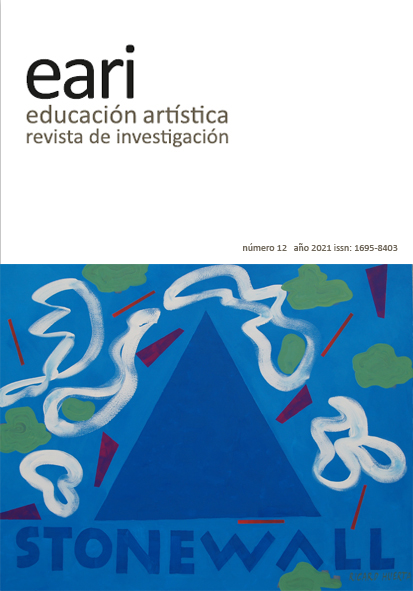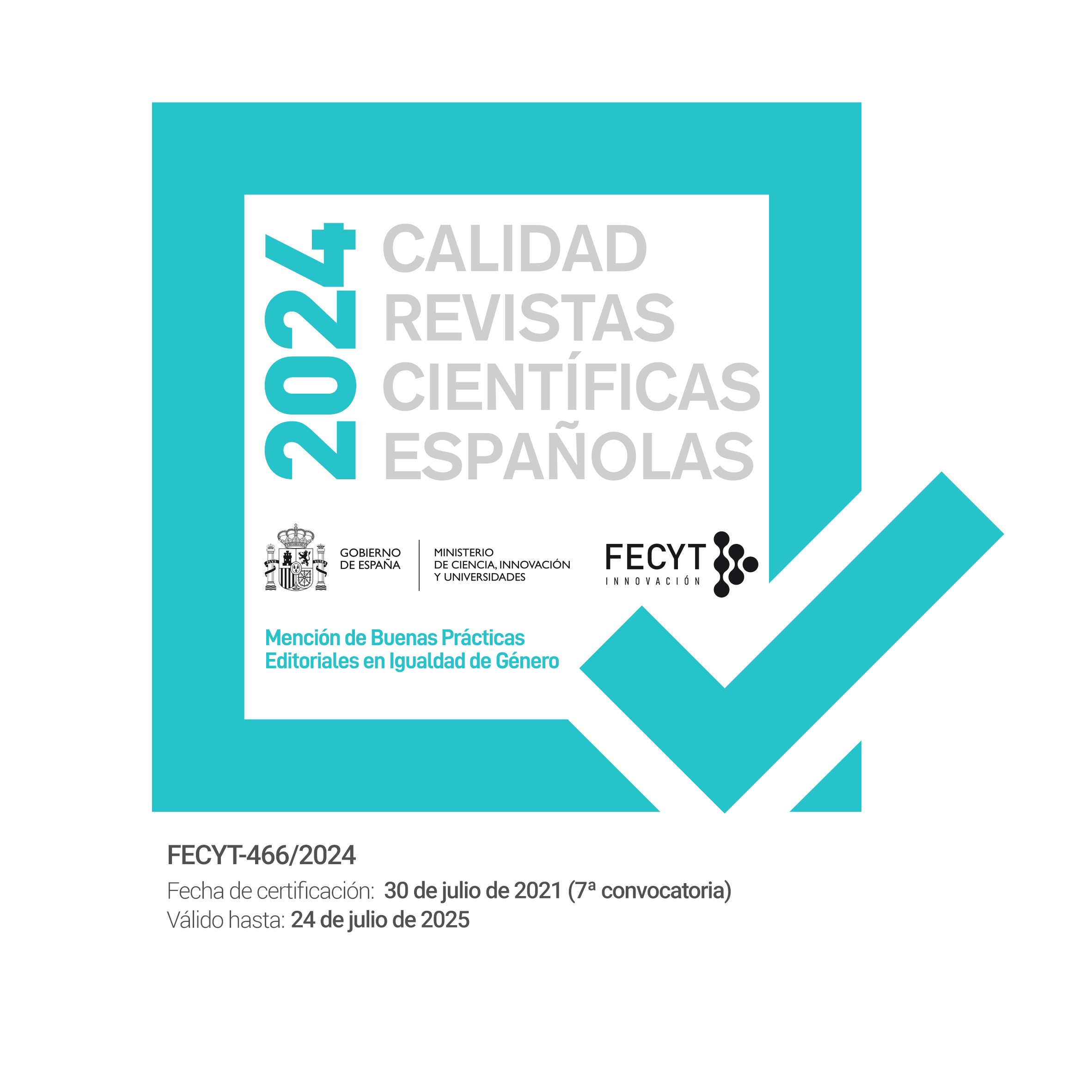Were La Monja Alférez, Jeanne Baret, Jeanne Dieulafoy (and others) hidden women travellers searching for other identity?
DOI:
https://doi.org/10.7203/eari.12.20424Keywords:
crossdressed travellers, la Monja Alférez, Jeanne Baret, Jane Dieulafoy, gender identity, cultural identity Abstract
Abstract
La Monja Alférez, Jeanne Baret and Jane Dieulafoy did not coincide in the historical period, but they had travelled in crossdressers. The motivations to undertake travel, pilgrimage or to be a globe-trotter, depended on personal causes that transcended the women or, on the contrary, corresponded to hidden goals. It happened with the three traveling around that we intend to fulfil paradigmatic situations that will allow us to understand other cases mapped in the theory and literature of women's travel in the occidental in the 17th, 18th and 19th centuries. In travels as for their residences, the three travellers liberated themselves from the restrictions of their countries. Depending on their nationality, they had different welcoming for historical, diplomatic and geostrategic reasons. For the 19th century Frenchwoman Jane Dieulafoy, who participated at archaeological missions in Persia, it was different from the woman voyager dressed as a sailor, Jeanne Baret, who crossed the seas at the 17th century and was the first woman to circumnavigate the globe. More so ever, they differentiated themselves from Catalina de Erauso, who, escaping from Spain, survived against all odds. In fact, she lived a risky adventure – either woman or man. Crossdressing, while traveling and living abroad, had implications of gender, reason, profession and intellectual culture, also in a colonialist plan. Circumstances meant for each one, different types of intersubjective relationship and with their communities. For their conviction and inner strength, they request interdisciplinary studies, expanding critical axiologies in the present time.
 Downloads
Downloads
 References
References
Adams, A. (2010). Ladies of the Field: Early Women Archaeologists and Their Search for Adventure. Greystone Books.
Bassetto, B. F. (2017). Introdução, Egéria, Uma Narrativa de Viagem aos Lugares Santos. [EDUFU] Universidade Federal de Uberlândia.
Bougainville, L. A. (1772). Voyage autour du monde par la frégate du roi La Boudeuse et la flûte L'Étoile en 1766, 1767, 1768 & 1769. Seconde édition, augmentée. Tome premier [-second]. https://gallica.bnf.fr/ark:/12148/btv1b8602974k/f9.image
Bourguignat, N. (2008). Le Voyage au féminin. Perspectives historiques et littéraires (siècles XVIIIe- XXe). Strasbourg : Presses Universitaires de Strasbourg.
Castañeda, Paloma (2003) Viajeras. Aldebarán.
Christinat, C. (1995). Une femme globe-troteur avec Bougainville : Jeanne Baret (1740-1807). Annales de Bourgogne. 67. 41-55.
Christinat, C. (1996). Une femme globe-troteur avec Bougainville : Jeanne Baret (1740-1807). Outre-Mers. Revue d'histoire, 310. 83-95.
Diderot, D. (1775). Supplément au Voyage de Bougainville ou Dialogue entre A. et B.sur l’Inconvenient d’attacher des idées mmorales a certaines actions physiques qui n’en comportent pas. Texte établi par J. Assézat et M. Tourneux. Garnier, vol. II.
Dieulafoy, J. (1901). Aragon et Valence : Barcelone, Saragosse, Sagonte, Valence; les beaux-arts, les moeurs, les coutumes. Libraire Hachette.
Dieulafoy, J. (1888). A Suse – Journal des fouilles. 1884-1886. Libraire Hachette.
Dieulafoy, J. (1887). La Chaldée et la Susiane. Libraire Hachette.
Dieulafoy, J. (1890). Parysatis. Alphonse Lemerre Éditeur.
Esteban, A. (Ed.) (2020). Historia de la Monja Alférez. Catalina de Erauso, escrita por ella misma. Catedra.
Estelman, F., Moussa, S. & Wolfzettel, F. (2012). Voyageuses Européennes au XIXe. Siècle – Identités, Genres, Codes. PUPs.
Gran-Emeric, E. & J. (1990). Jane Dieulafoy – une vie d’homme. Perrin.
Ibañez, R. (2004). La Monja Alférez. Poland [Wrocklaw]: Amazon Fullfilment.
Lapeyere, F. (2011). Quand les voyageuses decouvrent ‘esclavage. Payot.
Mendieta, E. (2010). En busca de Catalina de Erauso- Identidades en conflicto en la vida de la Monja Alférez. Ediciones Universidad Jaume I.
Monicat, B. (1996). Itinéraires de l'écriture au féminin: voyageuses du 19e siécle. Editions Rodopi B. V.
Monicat, B. (1994). Problématique de la préface dans les récits de voyages au féminin du 19e siècle. Nineteenth-Century French Studies, Fall—Winter 1994-95, Vol. 23, No. 1/2 (Fall—Winter 1994-95). Nebraska University, pp. 59-71 in https://www.jstor.org/stable/23537319
Morató, C. (2020). Viajeras Intrépidas y Aventureras. Plaza y Janes.
Mouchard, C. (2020). L’Aventurière de l’Étoile. Éditions Tallandier.
Novalis, F. (1992). Fragmentos. Assírio & Alvim.
Pereira, E. O. (2018). Mujeres viajeras de la Antigüedad – Los relatos de Egeria y otras peregrinas a Tierra Santa. Ed. Sígueme.
Reverzy, C. (2003). Femmes d’aventure – du Rêve à la réalisation de soi. Éditions Odile Jacob.
Ridley, G. (2011). The Discovery of Jeanne Baret – A Story of Science, the High Seas, and the First Woman to circumnavigate the Globe. Broadway Papersback.
Robinson, J. (1990). Wayward Women – a Guide to Women travellers. Oxford Presses.
Sand, G. (1856). “Un hiver à Majorque”. Oeuvres autobiographique, t. II. Ed. J. Hetzel.
Serrano, S. (2014). Mulheres Viajantes. Tinta-da-China.
Tepe, E., Ridley G & Bohs L. (2012). A new species of Solanum named for Jeanne Baret, an overlooked contributor to the history of botany. PhytoKeys 8: 37–47. doi: 10.3897/phytokeys.8.2101.
Ueckmann, N. (2020). Genre et Orientalisme – Récits de Voyages au féminin (XIXe et XXe siècles). UGA Éditions (géneré online le 25 juin 2020). http://books.openedition.org
Downloads
Published
How to Cite
-
Abstract823
-
PDF (Español)809
Issue
Section
License
![]()
Educación artística: revista de investigación (EARI) retains the proprietary rights (copyright) of published works, and favors and allows the reuse of the same under the license Creative Commons Attribution-Noncommercial Use 4.0 International License (CC-BY-NC 4.0), which allows third parties to use the published material whenever the authorship of the work and the source of publication is mentioned (journal, publisher and URL of the work), and it is used for non-commercial purposes.
Authors are encouraged to disseminate their work after it has been published, through the internet (for example, in institutional archives online or on its website) which can generate interesting exchanges and increase work appointments.








